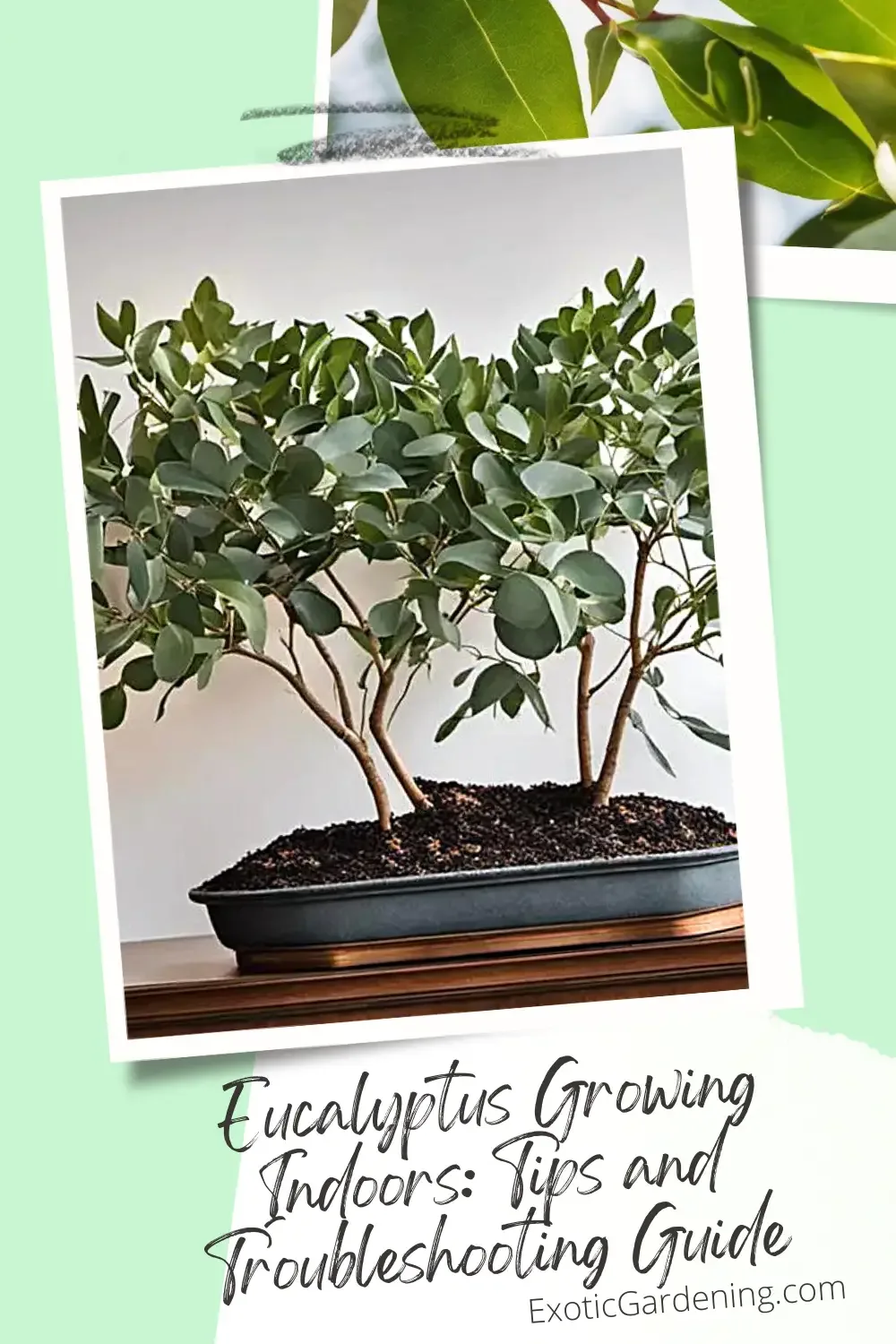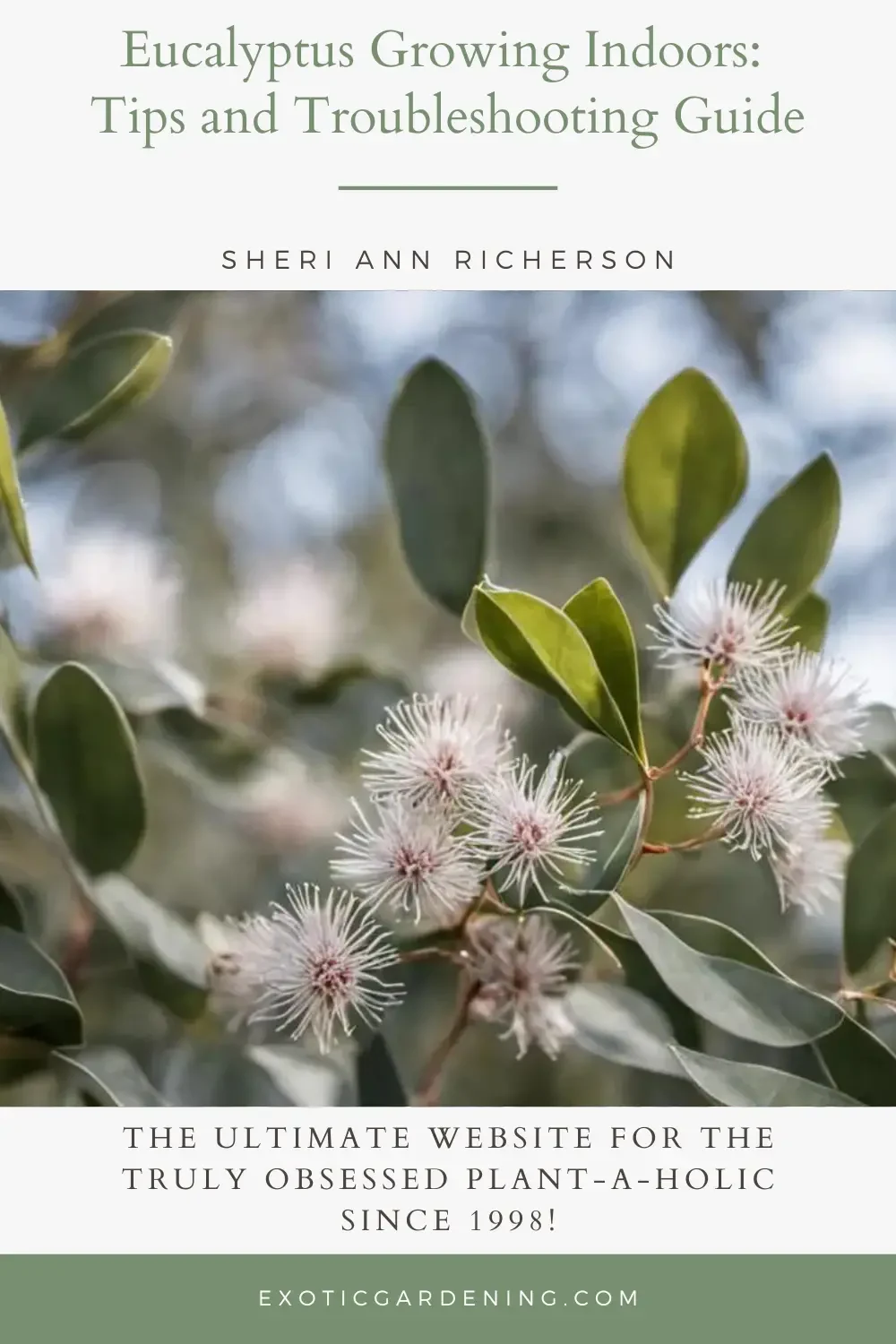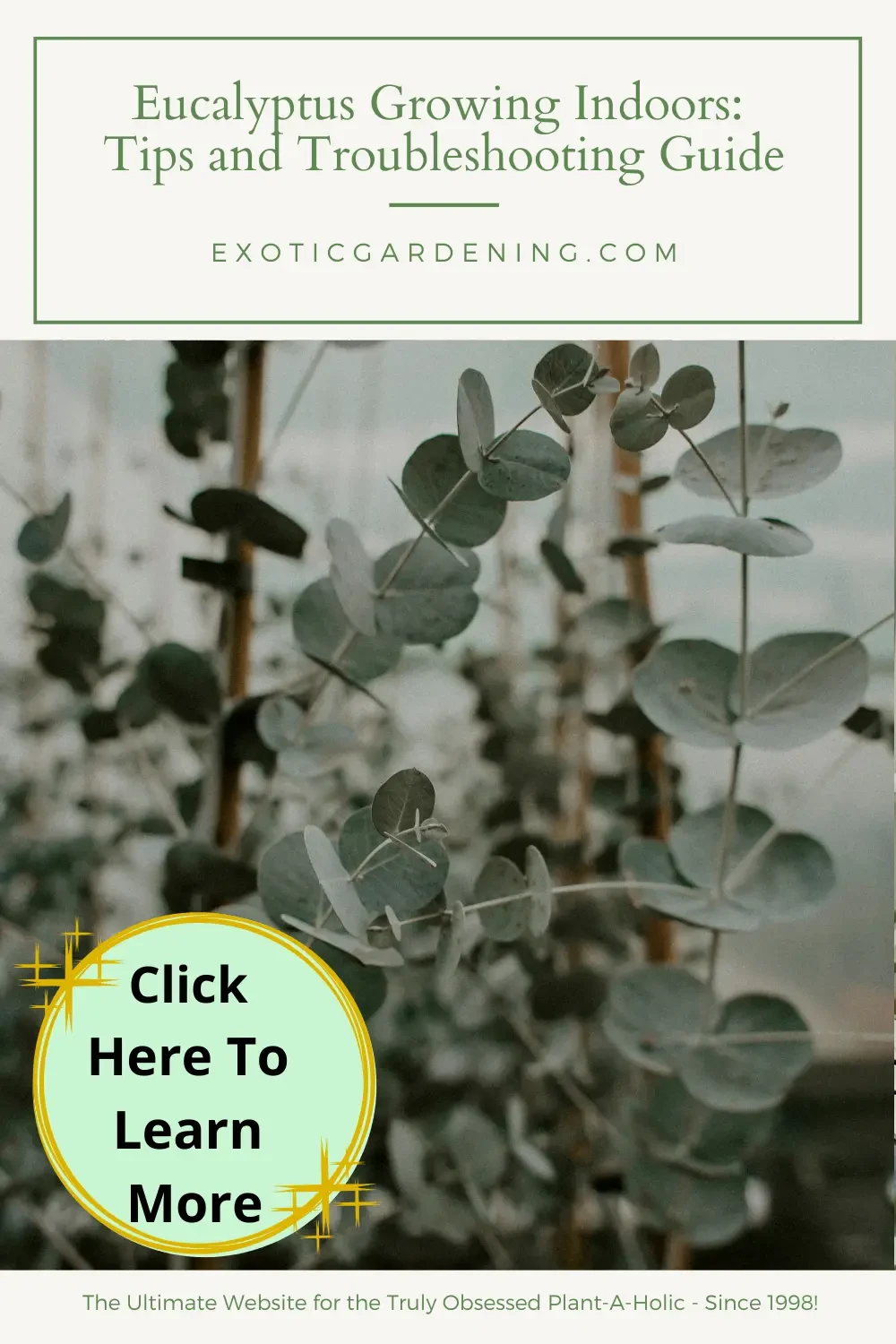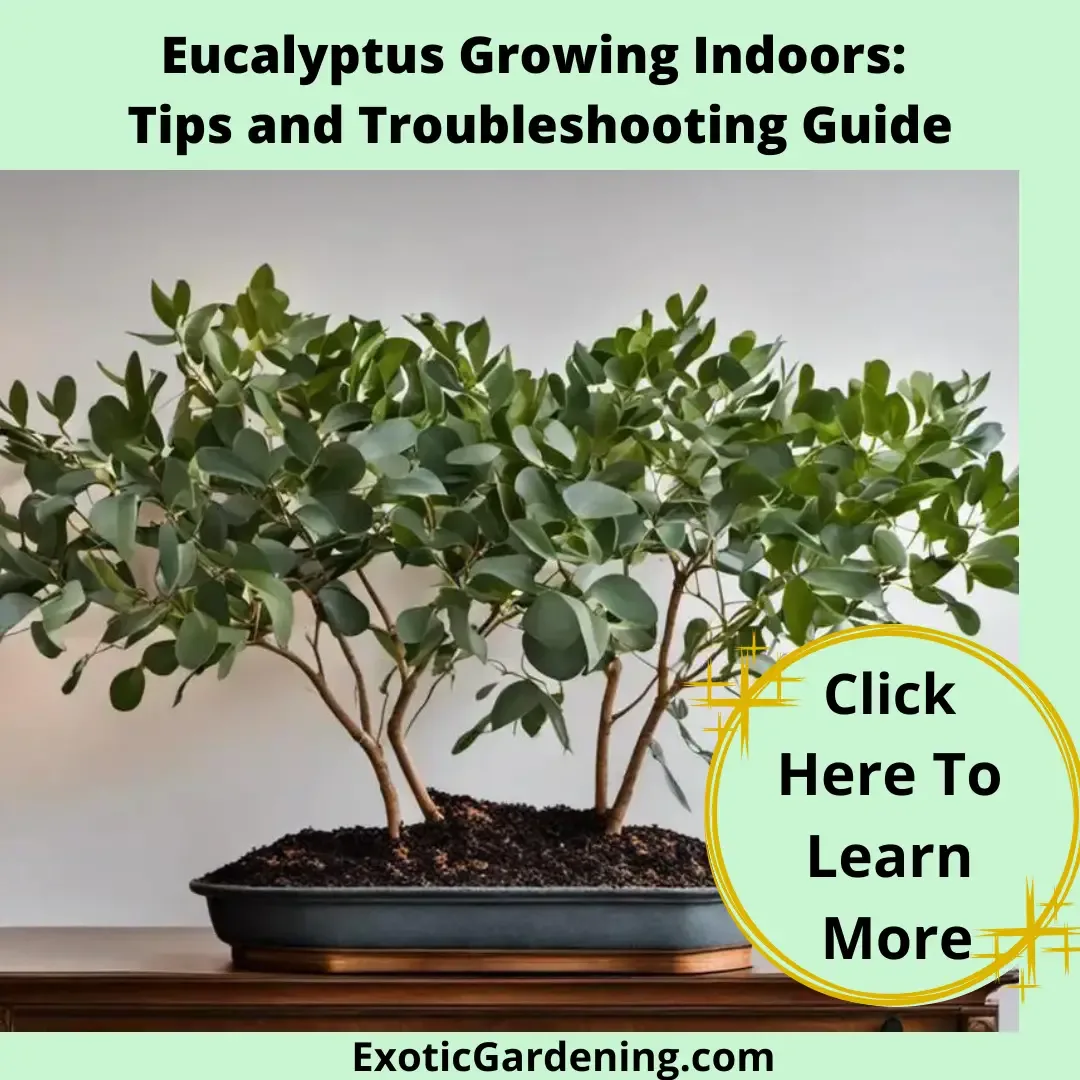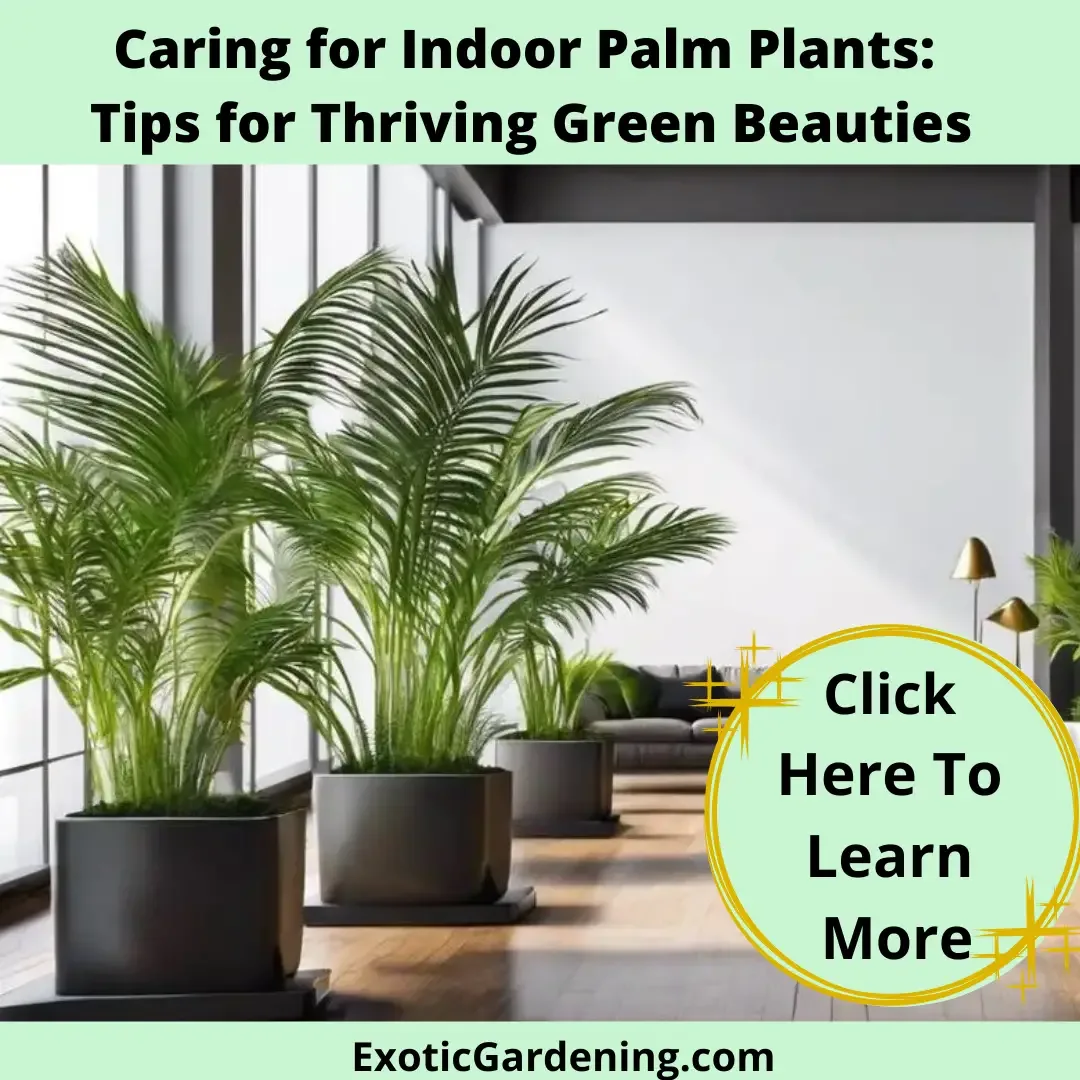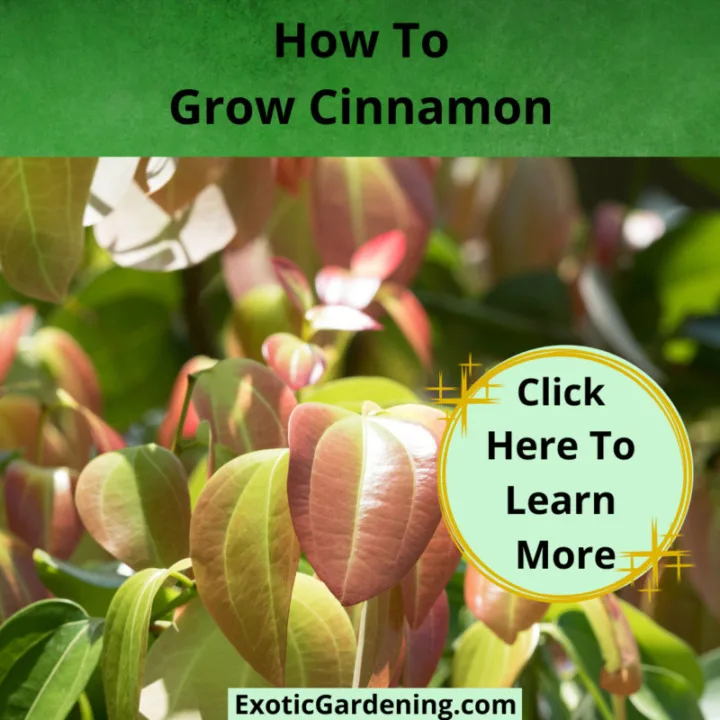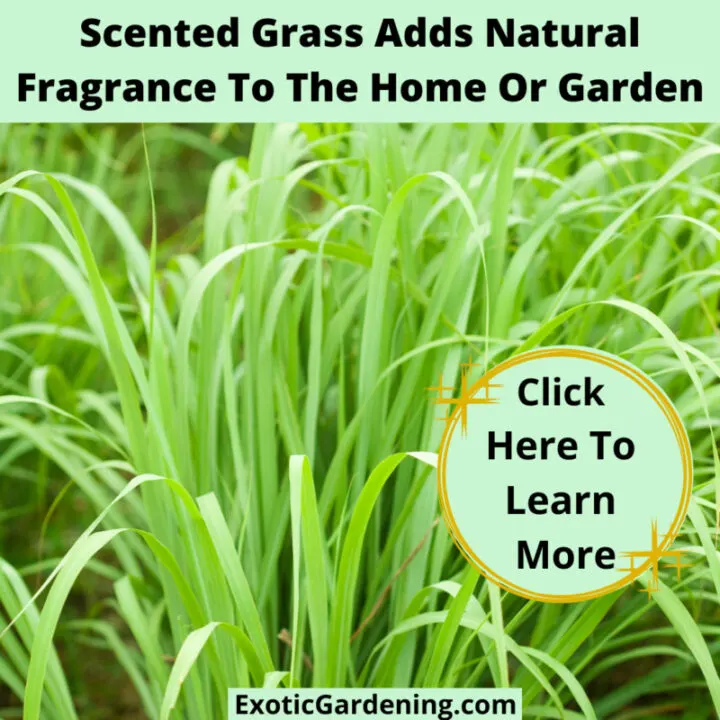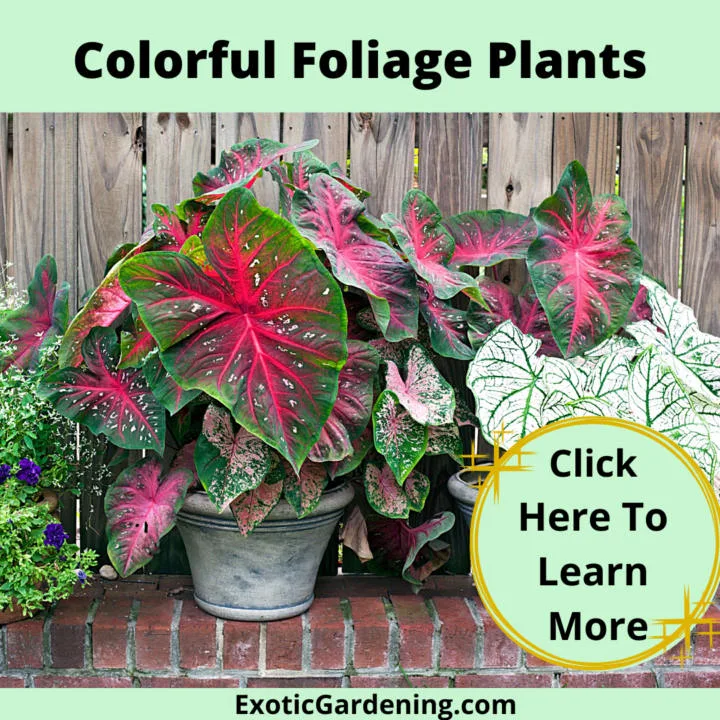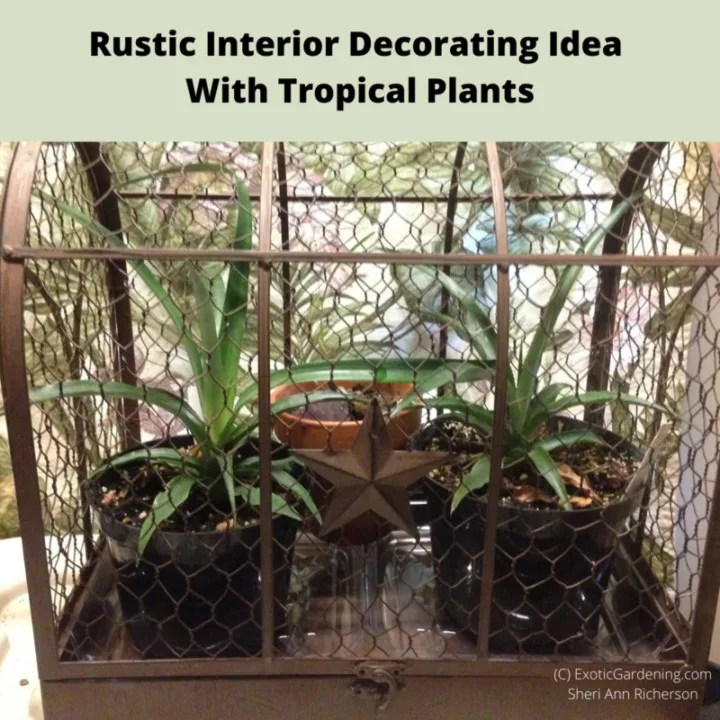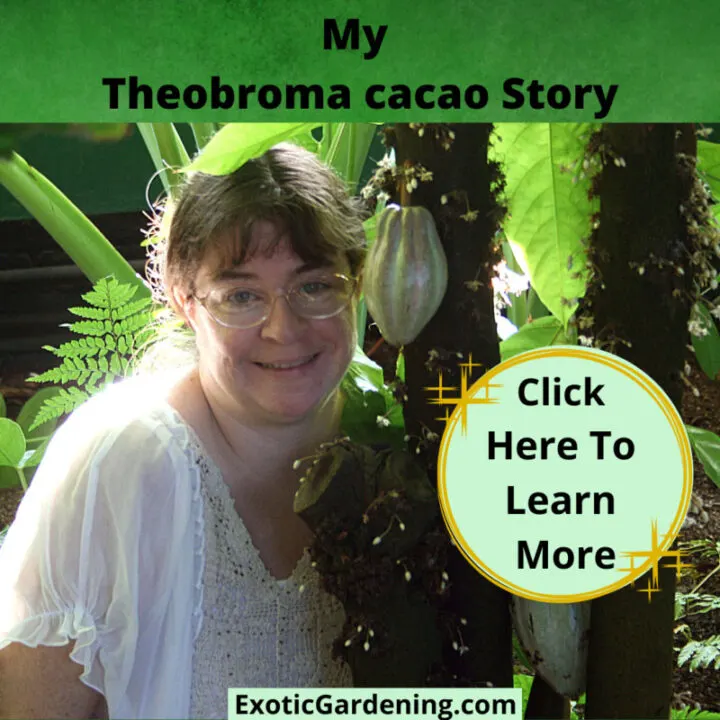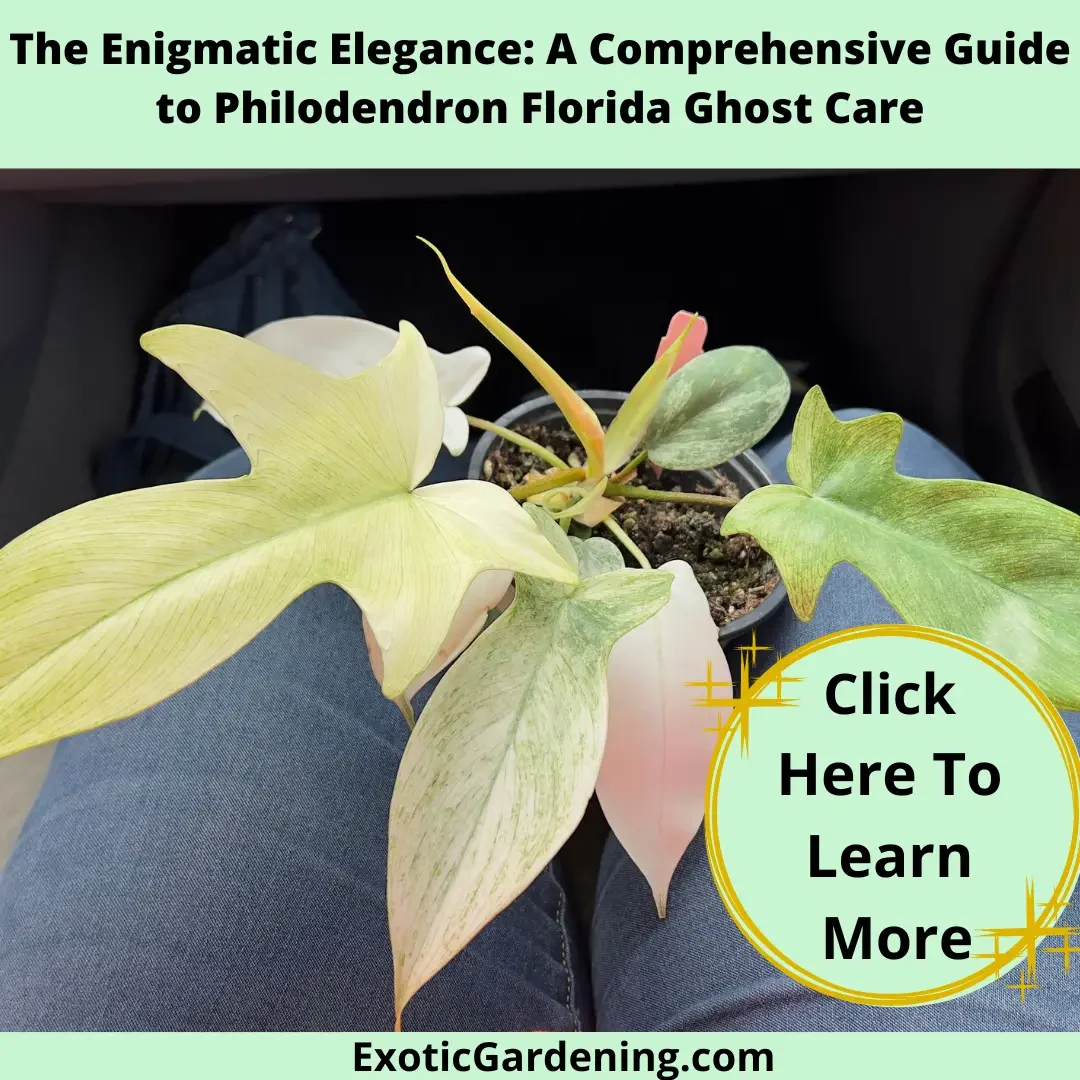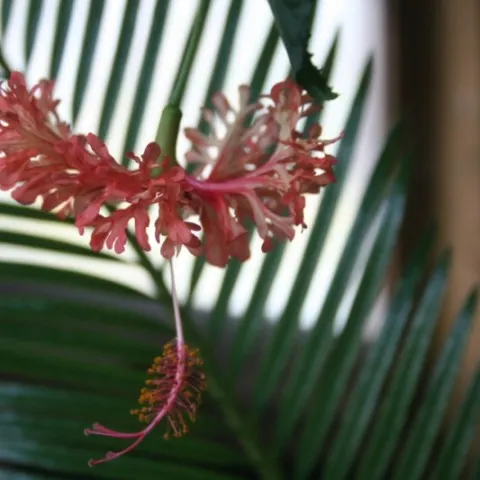Eucalyptus growing indoors is a subject close to the hearts of both gardeners and houseplant enthusiasts.
The eucalyptus tree, a symbol of both beauty and vitality, has captivated admirers for centuries.
It’s not just its majestic presence in outdoor landscapes that draws our fascination but also its remarkable adaptability to flourish within the cozy confines of pots and planters in our very own homes.
In this journey, we’re about to embark on a captivating exploration into the world of eucalyptus growing indoors.
We’ll unravel the enchanting tapestry of factors such as light, temperature, and humidity that together craft the perfect environment for this tree’s growth.
Our goal is to empower you with the wisdom and techniques required to embark on your indoor eucalyptus growing adventure.
We’ll commence with the essential planting process and then move on to the ongoing care routines, including watering, pruning, and pest control.
But that’s not all; we’ll also prepare you to tackle those challenging moments when our beloved eucalyptus faces issues.
We’ll uncover the most effective remedies to common diseases and problems.
So, whether you’re a seasoned gardener or a budding houseplant enthusiast, get ready to dive into the captivating universe of eucalyptus growing indoors, and let’s nurture the vitality and beauty of this wonderful plant right in our own homes.
Optimal Growing Conditions for Indoor Eucalyptus
When it comes to indoor gardening, there’s nothing quite as rewarding—or breathtaking—as cultivating a eucalyptus.
Known for their fragrance and striking, silver-foliaged appeal, eucalyptus plants make for fantastic indoor companions.
But understanding the ideal growing conditions can make the difference between a thriving eucalyptus and a wilting wonder.
Let’s dive right into the nitty-gritty of growing this spectacular specimen indoors.
Temperature: The Foundation of Success
First things first, temperature is pivotal to the success of indoor eucalyptus plants.
They are natives to Australia and, as such, they adore a warm environment.
Aim to maintain a temperature range of 65°F to 71°F during the day and slightly cooler at night.
Extreme temperature fluctuations can lead to leaf drop, so maintaining a consistent warmth is key.
Sunlight: Eucalyptus’s Best Friend
Now – sunlight.
Eucalyptus plants are big fans!
They bask in full sun for at least six hours each day.
South-facing windows are a viable option as they often receive direct sunlight.
For those who live in cloudier regions, don’t fret!
A grow light can also work beautifully to supplement light.
Finding the Right Balance: Watering Tips
Next up, let’s talk about water.
While eucalyptus plants do need consistent moisture, they detest waterlogged soil.
It’s all about balance.
Ensure the soil is moist, but never soaking.
It’s advisable to let the top inch or so of soil dry out before re-watering.
Over-watering can lead to root rot, a common pitfall for passionate indoor gardeners.
Embracing Humidity for Growth
Humidity is another significant player in the eucalyptus growth story.
These plants flourish in higher humidity levels, typically around 50%.
Dry air just won’t do.
To boost the humidity around the plant, you can mist the leaves regularly, place a tray of water near the plant, or use a humidifier.
Soil Matters: Choosing the Right Mix
Choosing the right soil warrants discussion as well.
Eucalyptus prefers well-draining soil.
They’re not fond of heavy, compacted pots that tend to hold water.
Opt for a good quality potting mix, potentially blended with perlite or coarse sand to improve drainage.
Nourishment for Your Eucalyptus
Now, once all the growth requirements are in place, there’s one finishing touch every eucalyptus parent should bear in mind: feed your eucalyptus plant during its growing stage with a balanced slow-release fertilizer.
This not only supports healthy growth but also encourages that mesmerizing scent eucalyptus is so loved for.
The Thrill of Growing Eucalyptus Indoors
All said, growing eucalyptus indoors is not just about enhancing interior aesthetics or creating a nice conversation piece when guests come over.
It’s also a thrilling journey, one marked by tiny new buds, growing leaves, and the satisfying challenge of providing just the right care for these beautiful indoor garden stalwarts.
The Enchanting Aroma of Lemon Eucalyptus
Among the various eucalyptus species you can grow indoors, the lemon eucalyptus (Eucalyptus citriodora) stands out for its exquisite fragrance.
If you’re a fan of captivating scents in your home, this is a must-have addition to your indoor garden.
- Citrus-Infused Aromatherapy: The name says it all – lemon eucalyptus emits a delightful lemony fragrance. It’s like having a touch of citrus-infused aromatherapy in your living space. The leaves release this refreshing scent when touched or even with a gentle breeze, making it a sensory delight for anyone nearby.
- Natural Air Freshener: Lemon eucalyptus is a natural air freshener, perfect for creating a vibrant and uplifting atmosphere indoors. Its scent is not only pleasant but also has potential insect-repelling properties, which can be an added benefit, especially in areas prone to pesky mosquitoes.
- Important Note: Not for Ingestion: It’s crucial to emphasize that lemon eucalyptus leaves should not be ingested. Although the leaves are sometimes used for tea, lemon eucalyptus is not considered safe for culinary use. Please exercise caution and keep it out of reach of children and pets.
Growing lemon eucalyptus indoors not only adds a delightful aroma to your living space but also opens up the door to various creative uses.
It’s a plant that appeals to the senses and offers a fresh and invigorating experience, making it a favorite for many indoor gardeners.
Just remember, it’s all about enjoying its fragrance, not its taste.
Eucalyptus Nicholii: A Captivating Indoor Companion
Eucalyptus nicholii, often recognized as the Narrow-leaved Black Peppermint or Willow Peppermint, is a captivating eucalyptus variety that has made its way into the hearts of indoor garden enthusiasts.
This unique species is renowned for its slender, willow-like leaves and a delightful peppermint fragrance, creating an enchanting ambiance in your home.
Noteworthy Traits of Eucalyptus Nicholii:
- Elegant Leaves: The distinct feature of Eucalyptus nicholii lies in its narrow, lance-shaped leaves, which exhibit a striking blue-green hue. This foliage adds a touch of elegance and sophistication to your indoor garden. Moreover, the leaves release a refreshing peppermint scent when touched, making it a sensory delight for those who encounter it.
- Manageable Size: Eucalyptus nicholii, as a smaller eucalyptus species, is well-suited for indoor cultivation. While it can reach heights of 15 to 20 feet when grown outdoors, it can be pruned to maintain a more manageable size indoors, ensuring it fits seamlessly within your living space.
- Peppermint Aroma: The defining characteristic of Eucalyptus nicholii is its delightful peppermint fragrance. This aroma not only adds a pleasant and natural air freshening quality to your indoor environment but also introduces a touch of aromatherapy for a refreshing sensory experience.
Eucalyptus nicholii is a unique and aromatic addition to your indoor garden.
With its slender leaves and invigorating peppermint fragrance, it stands out as a captivating companion for your indoor living space.
With proper care and attention, you can enjoy the beauty and refreshing aroma of this enchanting eucalyptus variety right within the comfort of your home.
Eucalyptus Melliodora: The Bee-Friendly Honey Eucalyptus
Eucalyptus melliodora, commonly referred to as the Yellow Box or Honey Eucalyptus, is not just a captivating addition to your indoor garden; it plays a vital role in supporting the well-being of our pollinator friends, the bees.
This unique eucalyptus species stands out for its distinctive features and its importance as a nectar source for honeybees.
Key Features of Eucalyptus Melliodora:
- Elegance in Simplicity: The beauty of Eucalyptus melliodora lies in its simplicity. Its leaves are a rich green, creating a visually pleasing contrast with its smooth, pale bark. This eucalyptus variety offers a touch of nature’s elegance to your indoor garden.
- Honey Nectar for Bees: What makes Eucalyptus melliodora even more remarkable is its role as a valuable nectar source for honeybees. These trees produce an abundance of sweet, golden nectar, making them a favorite among bees. The honey produced from their nectar is not only delicious but also essential for the survival of bee colonies.
- Aromatic Qualities: While it’s the bees that particularly cherish the nectar of Eucalyptus melliodora, the leaves themselves release a mild, pleasant fragrance. This aroma, combined with the elegance of its leaves and bark, adds a delightful sensory dimension to your indoor space.
Eucalyptus melliodora, the Honey Eucalyptus, is more than just a beautiful addition to your indoor garden.
It’s a vital contributor to the well-being of honeybees.
By cultivating this unique eucalyptus variety, you not only bring elegance and aroma to your living space but also play a part in supporting our essential pollinators and the creation of nature’s golden treasure, honey.
The Spectacular Rainbow Eucalyptus: Nature’s Living Canvas
The Rainbow Eucalyptus, scientifically known as Eucalyptus deglupta, is a mesmerizing masterpiece of nature.
This eucalyptus species is like no other, and its astounding display of colors and patterns makes it a captivating choice for your indoor garden.
Its remarkable bark is a living canvas, painting a vivid portrait of the passage of time.
Key Features of the Rainbow Eucalyptus:
- Striking Bark: What truly sets the Rainbow Eucalyptus apart is its bark, which undergoes a remarkable transformation. The outer layer of the bark peels away in patches, revealing a fresh layer beneath. As this newly exposed bark matures, it transitions through a stunning spectrum of colors. From bright green to vibrant blue, purple, orange, and maroon, the Rainbow Eucalyptus showcases nature’s vibrant palette in an ever-changing display.
- Elegant Foliage: While the bark takes the spotlight, the Rainbow Eucalyptus also boasts elegant, lance-shaped leaves with a glossy texture. These leaves provide a lovely contrast to the captivating bark, adding to the tree’s overall aesthetic appeal.
- Symbol of Renewal: The Rainbow Eucalyptus’s bark shedding and color change is symbolic of renewal and transformation. It’s a living reminder of the beauty that can emerge from change and growth.
- Growth Potential: While this eucalyptus variety can reach towering heights in its natural habitat, it can be pruned to a more manageable size for indoor cultivation. This means you can enjoy the enchanting colors of the Rainbow Eucalyptus in your own home.
The Rainbow Eucalyptus is a living work of art that evolves and transforms over time.
Its vibrant bark and elegant leaves create an ever-changing spectacle of colors, turning your indoor garden into a living canvas.
It’s a true testament to the beauty of nature’s creations and the wonders that can be found in the world of eucalyptus.
Eucalyptus in Flower Arrangements: A Touch of Elegance and Fragrance
Eucalyptus, with its graceful foliage and delightful fragrance, has earned a well-deserved place in the world of flower arrangements.
Whether you’re a seasoned florist or an enthusiastic DIY enthusiast, using eucalyptus as cut foliage adds an element of elegance and natural charm to your bouquets and displays.
Why Eucalyptus in Flower Arrangements?
- Aesthetic Beauty: Eucalyptus leaves, with their unique shapes, colors, and textures, provide an attractive backdrop to your floral creations. They complement a wide range of flowers, from bold and vibrant to delicate and pastel blooms.
- Fragrance: The aromatic qualities of eucalyptus are a bonus in flower arrangements. Different eucalyptus species offer varying scents, from refreshing peppermint to delightful lemony or even honey-like aromas. These fragrances enhance the overall sensory experience of your bouquets.
- Texture and Filler: Eucalyptus foliage serves as an excellent filler, creating a sense of fullness and depth in your arrangements. Their fine leaves add a soft, natural texture to the bouquet.
Suitable Eucalyptus Varieties for Cut Foliage:
- Silver Dollar Eucalyptus (Eucalyptus cinerea): Silver Dollar eucalyptus is a popular choice for its round, silvery-blue leaves. It pairs beautifully with a variety of flowers and adds a touch of elegance to any arrangement.
- Baby Blue Eucalyptus (Eucalyptus pulverulenta): The delicate, powder-blue leaves of Baby Blue eucalyptus are a charming addition to bouquets. They provide a gentle contrast to more vibrant blossoms.
- Lemon Eucalyptus (Eucalyptus citriodora): Lemon eucalyptus not only contributes to the aesthetics but also infuses your floral displays with a delightful lemony fragrance, creating an inviting atmosphere.
- Honey Eucalyptus (Eucalyptus melliodora): The Honey Eucalyptus is a great choice, not only for its aesthetics but also for its nectar production, which supports honeybees. It’s a thoughtful addition to your arrangements, both in beauty and purpose.
- Rainbow Eucalyptus (Eucalyptus deglupta): If you want to make a bold statement, the ever-changing colors of the Rainbow Eucalyptus bark can add a unique, artistic element to your flower arrangements.
Eucalyptus as cut foliage offers a versatile and striking addition to your floral designs.
Whether you prefer a eucalyptus variety for its beauty, fragrance, or symbolism, you’ll find that it elevates your flower arrangements to new heights.
It’s a testament to the wonders of nature and the creative possibilities it brings to the art of floral design.
By cultivating these eucalyptus varieties indoors, you can enjoy a year-round supply of exquisite cut foliage, adding a touch of natural beauty and fragrance to your flower arrangements whenever inspiration strikes.
Planting and Care of Indoor Eucalyptus
Breathe excitement into your indoor gardening routine by embracing the wonderful world of eucalyptus plants.
With their striking presence and potent aromas, these verdant natives of Australia infuse a touch of the exotic into your home.
Having covered the basics about the ideal temperature range, sunlight exposure, watering, humidity levels, choice of soil, and plant nutrition in our previous discussion, it’s now time to delve deeper.
Step-by-Step Guide to Planting Indoor Eucalyptus
- Eucalyptus seeds germinate best in a pre-prepared seed raising mix or in damp paper towels, which is my favorite method.
- Soak the seeds in water for a couple of hours before sowing to ensure optimal germination.
- Once soaked, spread the seeds over the top of your soil mix and lightly cover them with a fine layer of sand or vermiculite to retain moisture.
- These seeds love warmth, so ensure the potted seeds receive heat from below ideally around 68-72°F.
- Post-germination, when they have reached a manageable size, seedlings can be carefully transplanted into individual pots.
Eucalyptus Species Selection for Indoors
While countless species of eucalyptus exist, not all of them are suited to houseplant living.
A fan favorite for indoor cultivation is Eucalyptus gunnii ‘Azura’ for its compact size, striking coloration, and manageable growth pattern.
Another viable species is Eucalyptus citriodora, whose leaves emanate a delightful lemony scent.
Root System Care
Understanding the root system of the eucalyptus plant is fundamental to successful cultivation.
These plants have a tendency to become root-bound due to vigorous root growth, meaning the roots can take up the whole pot, leaving little room for soil.
To mitigate this, repot the plant annually, ideally in the spring in a container one size bigger.
Pruning and Shaping Indoor Eucalyptus
Pruning is key to maintain the desired shape and size of your eucalyptus, especially considering how fast these plants can grow.
Perform a spring pruning to encourage denser foliage.
Cut back to the desired height, just above a leaf node, and you’ll soon notice new shoots emerging.
Pest Management
Despite being relatively pest-free, eucalyptus plants sometimes face infestations of scale insects, mealybugs, and aphids.
Using a homemade soap solution or organic pesticides can aid in managing these pests.
From germinating seeds to battling bugs, the journey of nurturing an indoor eucalyptus is truly rewarding.
Prepare to be taken by surprise as these magnificent plants transform your indoor spaces, the scent of their leaves creating an enticing atmosphere that invigorates the senses.
Common Problems with Indoor Eucalyptus and How to Fix Them
Growing indoor eucalyptus plants is undoubtedly rewarding and therapeutic.
However, even with ideal conditions, some common problems might arise affecting the health and growth of your indoor eucalyptus.
But worry not, these issues can be fixed with attentive monitoring and appropriate action.
- Yellowing Leaves: One recurring issue might be the yellowing of leaves. This is usually a sign of nutritional deficiency. Even though you may have fed the plant with a balanced slow-release fertilizer, eucalyptus occasionally requires an extra touch of nutrients. Try adding trace elements like iron and zinc. Remember, these elements should be used sparingly. Overapplication can cause toxicity, and that’s a whole different set of problems.
- Leaf Drop: Another common problem is leaf drop. If the humidity is correct and the plant is not over-watered, the issue might be due to a sudden change in environmental conditions, such as temperature and light. Attempt to keep the environmental conditions as constant as possible.
- Wilting: Wilting is also a general indication of stress. Again, this could be due to a sudden change in environment. Try gradually acclimatizing your eucalyptus plant to any environment change.
- Stunted growth: Indoor eucalyptus plants require ample space for their roots to develop appropriately. If the plant’s growth appears stunted, it might be time to upgrade to a larger pot.
- Unattractive shape: If your eucalyptus has grown into an unattractive shape, don’t stress. Eucalyptus can be pruned into shape, especially during active growing season. Pruning also encourages denser foliage.
- Pests: A few pesky pests can cause significant damage to indoor eucalyptus. Common culprits include aphids, scale, and spider mites. These can typically be handled with mild insecticidal soap or a strong spray of water to remove the pests.
Remember, the key lies in observation and timely intervention.
So next time you spot a problem, don’t panic, just refer to this handy guide.
Embracing the Art of Indoor Eucalyptus Care
Now that we’ve uncovered the secrets to nurturing thriving indoor eucalyptus, we’re ready to embark on our own journey of cultivating these magnificent plants.
By mastering the delicate balance of light, temperature, and humidity and implementing effective care routines, our eucalyptus plants have every chance to flourish indoors.
And even when challenges arise, our newfound knowledge equips us with the confidence and strategies to address them.
The beloved eucalyptus, with its lush green beauty and enchanting aroma, has the potential to be a delightful addition to your indoor garden.
All it asks for is your tender and well-informed care.
So, let’s step into this green adventure, where every leaf and fragrance tell a story of dedication and love for the wondrous world of indoor eucalyptus.
Tropical Fruit And Foliage Plants
Tropical Plants For Medium To High Light
Check out these awesome tropcial plants for medium to high light that make wonderful, easy to care for houseplants.
Caring for Indoor Palm Plants: Tips for Thriving Green Beauties
Discover expert tips for caring for indoor palm plants, ensuring their vitality and adding a touch of tropical elegance to your space.
How To Grow Cinnamon
Learn how to grow cinnamon from seed or cuttings. Cinnamon trees do well as houseplants even though they can get rather large.
How To Grow And Harvest Pineapple From Home
Learning how to grow and harvest pineapple is a fun project that anyone in any climate can experience as long as they are patient.
Colorful Foliage Plants
Try these colorful foliage plants in your garden this summer and then bring them indoors during the winter to brighten up your home decor.
Easy Exotic Houseplants: Tropicals That Thrive Indoors in Containers
Tropical plants are the most beautiful, easy to grow indoor houseplants. Start growing exotic houseplants today that fruit and flower!
My Theobroma cacao Story
I've had a love affair with growing chocolate for over twenty years, so I wanted to share my Theobroma cacao story with all of you.
Scented Grass Adds Natural Fragrance To The Home Or Garden
Scented grass is one way to add scent to your garden or even your home. Best of all, they look pretty, smell great and have practical uses.
Learning About Bananas
Once you start learning about bananas you may find this popular and important fruit is really quite fascinating and makes a great houseplant.
The Enigmatic Elegance: A Comprehensive Guide to Philodendron Florida Ghost Care
Elevate your indoor gardening with our guide to Philodendron Florida Ghost care, propagation, and maintenance tips.
Incorporating Bold And Exotic Plants Into Your Landscape
Discover the allure of bold and exotic plants for your garden in this comprehensive guide. Transform your landscape today!
Variegated And Other Interesting Plants: Elevate Your Space with Nature's Painted Wonders
Explore the world of variegated and unique plants, adding vibrant beauty and intrigue to your indoor oasis.
How To Grow Tropical Plants
Growing tropical plants - also known as houseplants - indoors is fun and enjoyable plus many of them clean the indoor of pollutants.
It is easy to grow exotic looking plants that produce tropical fruit and colorful flowers in a pot in your living room or office.
Many of these plants are easy to start from seed and I share with you five plants that I recommend for indoor growing.
I also share with you why growing your own tropical fruit saves money.
In this video you will learn:
How to bring tropical plants indoors at the end of summer
How to grow tropical plants indoors
How to protect and overwinter tropical plants outdoors in cold climates
How to propagate tropical plants
How to water tropcial plants
How to grow topical plants in a greenhouse

